calsfoundation@cals.org
Lincoln (Washington County)
| Latitude and Longitude: | 35º56’58″N 094º25’24″W |
| Elevation: | 1,472 feet |
| Area: | 2.87 square miles (2020 Census) |
| Population: | 2,294 (2020 Census) |
| Incorporation Date: | November 23, 1907 |
Historical Population as per the U.S. Census:
|
1810 |
1820 |
1830 |
1840 |
1850 |
1860 |
1870 |
1880 |
1890 |
1900 |
|
– |
– |
– |
– |
– |
– |
– |
– |
– |
– |
|
1910 |
1920 |
1930 |
1940 |
1950 |
1960 |
1970 |
1980 |
1990 |
2000 |
|
292 |
534 |
687 |
720 |
771 |
820 |
1,023 |
1,422 |
1,460 |
1,752 |
|
2010 |
2020 |
|
|||||||
|
2,249 |
2,294 |
|
Lincoln is located in northwest Arkansas on Highway 62 halfway between Prairie Grove (Washington County) and the Oklahoma state line. Heavily influenced by the apple industry through most of its history, Lincoln has been home to the Arkansas Apple Festival since 1976. The Arkansas Country Doctor Museum (ACDM) is also located in Lincoln.
Louisiana Purchase through Early Statehood
Washington County land records report that a man named Samuel Starr was appointed Osage Indian agent in about 1828 and established a presence near what would become North Street and West Avenue in Lincoln. North Street was the principal route to the Cherokee Nation at Tahlequah, the Creek (Muscogee) Nation just west of Fort Gibson, and the Arkansas River at Muskogee. The name Starr Hill, the township in which Lincoln is situated, was probably so designated because of Samuel Starr’s long tenure. Others attribute this designation to James Starr, who moved to the area from Illinois in the 1870s.
Early settlers of this part of Arkansas brought two primary commodities: corn seed and apple sprouts or shoots, with corn being their primary staple. Many of the early settlers had Native American roots and were accustomed to relying on corn for themselves and their livestock. Most settlers also used the apple to a great extent. Cider was a drink of choice, vinegar was an essential preservative, and the fruit could be cooked, stored, or dried for preservation.
The soil around Lincoln seemed well suited for orchards. Earl Holt, son of early settler Jack Holt, established the first known commercial nursery in 1850. His father had begun cultivating apples by 1827. Earl Holt’s brother DeKalb was credited with developing the Arkansas Black apple. George Collins originated the Collins Red around 1867. Wellington Waller developed the August Beauty and the Summer Champion. After the turn of the twentieth century, William G. Vincenheller (who was the first dean of the University of Arkansas’s College of Agriculture) built a cold storage facility south of Lincoln. Although other crops, especially corn, were being cultivated in the area around Lincoln, most attention in these years was given to the production of apples.
Civil War through the Gilded Age
Men from Washington County served on both sides of the Civil War. Because of their absence, and because of the violence of the conflict (the Battle of Prairie Grove was fought only a few miles east of Lincoln), many farms in the area were abandoned and allowed to fall into ruin. Union soldiers and Confederate guerillas were equally feared, and re-establishment of the area took several years following the end of the war.
In the 1870s, a school was built amid a patch of thorny blackjack trees near what would become the Lincoln Rodeo arena. The school and the community came to be known as Blackjack. In 1884, Starr Hill Township was formed, and some began to call the settlement Georgetown instead of Blackjack. The post office was established in Joseph Liburn Carter’s store that year. When they applied for postal service, townspeople learned that a Georgetown already existed in neighboring Madison County. After consultations with many residents, Carter began using the name Lincoln for the post office. At the time, Lincoln was a settlement of houses on land described by metes and bounds, and no formal town plat existed. No account has been preserved to explain why Carter chose the name Lincoln for the community.
Early Twentieth Century
About the turn of the century, the Ozark and Cherokee Central (O&CC) branch of the St. Louis–San Francisco Railway began its acquisition of rights of way across Washington County. The settlement called Lincoln was clustered north of present-day North Street. Paul Easby, an employee of or agent for the railroad company, bought twenty-two acres for a town site south of North Street from former slave Wesley J. Bean. The site fit neatly between North Street and the railroad track that paralleled it. The plat was filed in 1903 but modified in 1907. The city was incorporated in November 1907 with Jim Leach as its first mayor.
Easby talked local business leaders into putting up $1,500 for a depot. On opening day, January 22, 1902, many barrels of apples were taken to the depot for shipment. The railroad had an immediate impact on business. Farmers and nurserymen now had a local point from which to ship and no longer had to depend on fruit peddlers to drive wagons to nearby communities for door-to-door sales. In 1903, a group of Cane Hill investors obtained a state charter and established Citizen’s Bank, changing its name to Bank of Lincoln about two years later. The town soon had many thriving businesses. The first church in Lincoln was built by Methodists in 1902.
In 1915, the town began to grow to the south. W. C. Braly bought a tract on the south side of what is now U.S. 62. The lots—twenty-five feet wide and generally 140 feet deep—were sold for as little as three dollars at an auction that lasted two days.
The Depression was hard on the town because the railroad line died, meaning that the shipping point for local produce was lost. Residents struggled to work their way out of the economic stagnation in the late 1930s. U.S. 62 was graded and graveled and became an all-weather road. It was paved about 1941.
The apple industry suffered through difficult times during these years. Badly damaged by insects and disease, trees succumbed to drought and to unseasonable frosts. Grapes and livestock began to replace the once-thriving orchards. The Pitts family had operated a summer resort southwest of Lincoln for wealthy women and children from Texas and Oklahoma. In the 1930s, they converted their 400-acre orchard to pasture and began raising award-winning Polled Hereford cattle.
World War II through the Modern Era
World War II also deprived the area of labor, as Washington County suffered more than 100 casualties. After World War II, a new phenomenon arose in northwest Arkansas: commercial production of broiler chickens. Owners of small farms began to grow chickens on contract for the early pioneers in the industry. In 1967, the Pitts family’s remaining orchards were replaced with broiler houses raising poultry under the name of Sugar Hill Ranch.
Meanwhile, residents of rural Washington County including the Lincoln area were relocating to larger cities, especially Fayetteville (Washington County). While Lincoln had once been home to an African-American community with its own church and cemetery, by the end of the twentieth century, its population included no African Americans. (As of the 2010 census, however, the population included twelve black citizens.)
In the 1950s, Lincoln developed a sewer system for much of the town, as well as a source of municipal water. The city acquired water from a spring south of town. In 1960, the spring did not yield enough water to meet the needs of the growing town, so the city got funding for a new lake north of the city and established a water treatment plant and transmission lines. In 1974, the city began a project to provide sewer collection and improved its treatment capacity to accommodate major wastewater users.
The Bank of Lincoln sold to Simmons First National Bank in 1999. It is now a branch of Simmons First. Arvest Bank established a branch in Lincoln in 2001.
A citizens group started the Arkansas Apple Festival in 1976. By 2008, this annual festival, held the first weekend of October, was drawing 70,000 people to Lincoln for crafts, music, contests, and a parade.
For additional information:
Arkansas Apple Festival. https://arapplefest.com (accessed August 30, 2022).
Carter, L. D. “History of Lincoln, Arkansas.” Flashback 5 (August 1955): 19–20.
City of Lincoln, Arkansas. http://www.lincolnarkansas.com (accessed August 30, 2022).
History of Washington County, Arkansas. Springdale, AR: Shiloh Museum, 1989.
Payne, Ruth Holt. A History of the City of Lincoln. Lincoln, AR: Lincoln Leader, 1960.
Boyce R. Davis
Farmington, Arkansas
Staff of the CALS Encyclopedia of Arkansas
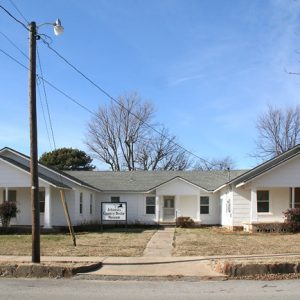 Arkansas Country Doctor Museum
Arkansas Country Doctor Museum 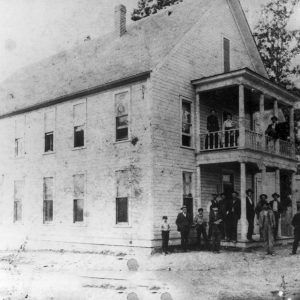 Lincoln Hotel
Lincoln Hotel 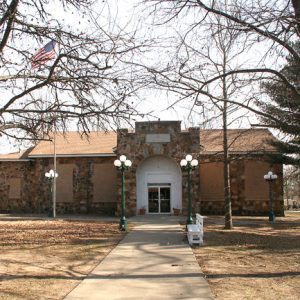 Lincoln American Legion Post
Lincoln American Legion Post 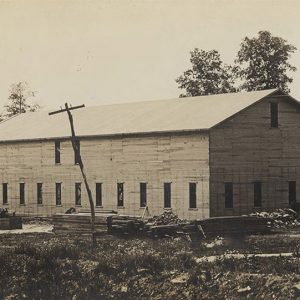 Lincoln Cannery
Lincoln Cannery 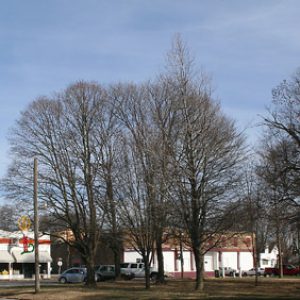 Lincoln Street Scene
Lincoln Street Scene 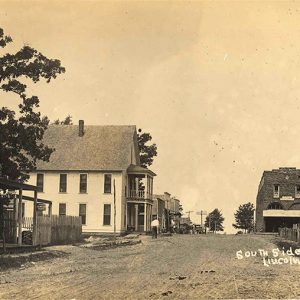 Lincoln Street Scene
Lincoln Street Scene 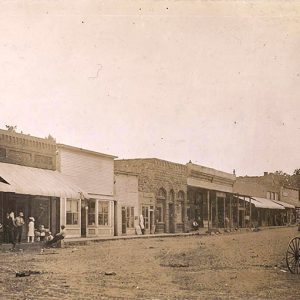 Lincoln Street Scene
Lincoln Street Scene 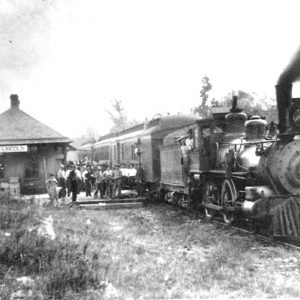 Lincoln Train Depot
Lincoln Train Depot 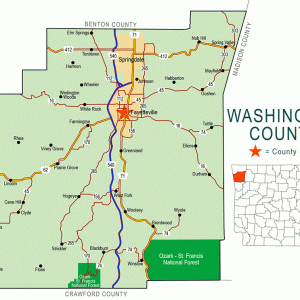 Washington County Map
Washington County Map 



Comments
No comments on this entry yet.